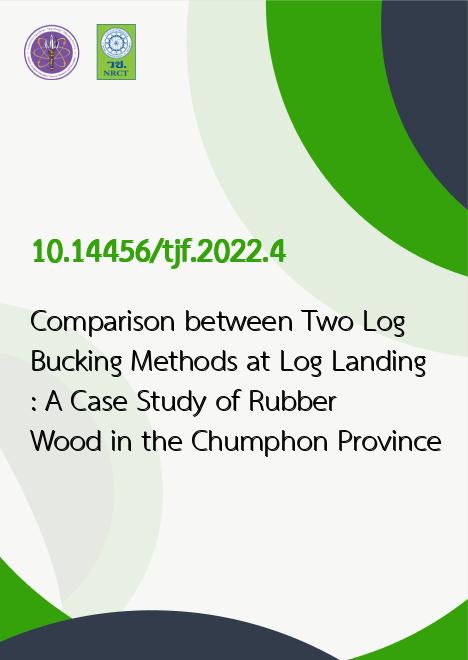
|
Comparison between Two Log Bucking Methods at Log Landing : A Case Study of Rubber Wood in the Chumphon Province |
|---|---|
| รหัสดีโอไอ | |
| Creator | Watcharin Sangsing |
| Title | Comparison between Two Log Bucking Methods at Log Landing : A Case Study of Rubber Wood in the Chumphon Province |
| Contributor | Laddawan Rianthakool, Nopparat Kaakkurivaara |
| Publisher | Kasetsart University |
| Publication Year | 2565 |
| Journal Title | Thai Journal of Forestry |
| Journal Vol. | 41 |
| Journal No. | 2 |
| Page no. | 39-47 |
| Keyword | Cross-cutting, Log landing, Rubber wood, Bucking time |
| URL Website | https://li01.tci-thaijo.org/index.php/tjf/issue/view/17485 |
| Website title | Thai Journal of Forestry |
| ISSN | 2730-2180 |
| Abstract | The objectives of the study were to compare two frequently used log bucking methods, namely conventional or overbucking and log supported methods, and to study the relationship between time consumed and other related factors. In the conventional log bucking method, the skidded rubber wood is sorted on the ground and cut on preset marked points using a chainsaw with the assistants who help the release of logs from the ground. In the log supported bucking method, small logs are used to support the rubber woods. Time study data and related factors i.e., number of logs, log length, and the number of crosscuts, were collected from the rubber plantation in Chumphon province. The results indicate that there were four work elements in the log bucking method i.e., log sorting, delimbing, marking, and bucking. The average time consumption of log sorting and bucking was significantly related to the method employed (p<0.05). The average time spent during log sorting in the conventional log bucking method was less than the other method, but the average time spent in the log supported bucking method was lower than in the conventional method. Productivity of chainsaw during only the bucking process without delay was 13.934 and 19.322 m3/h, respectively. |